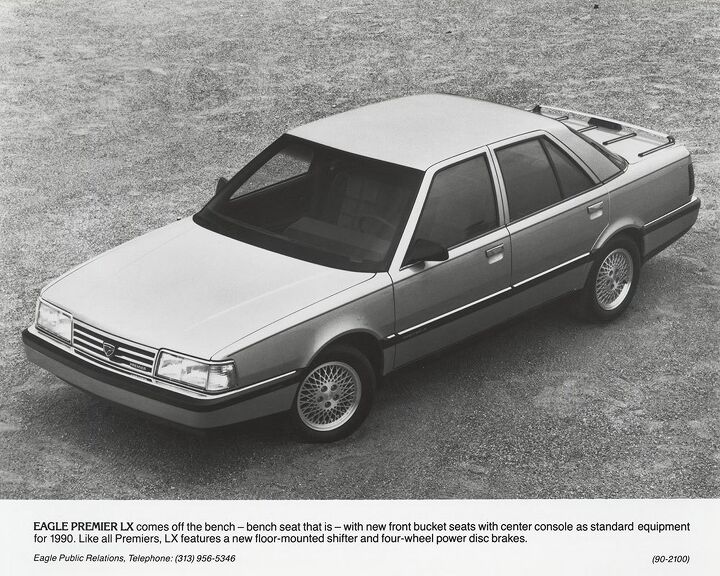#Amc
Americans Miss Pontiac More Than Any Other Defunct Car Brand
Like all industries, the automotive world has seen tons of change over the last several decades, and an unfortunate side effect of the evolutionary process has been the closure of several once-popular car brands. Here in the U.S., car nerds mourn the loss of brands like Saab, but it might be surprising to learn the brands that enthusiasts in other countries pine over.
Documentary Series The Last Independent Automaker in Production, Will Chronicle the Life and Times of American Motors Corporation
A new documentary is currently in production and promises to be of interest to many of our readership. It’s about everyone’s favorite underdog automaker, American Motors Corporation (1954-1988)! Pride of Kenosha, Wisconsin. The team behind the production of The Last Independent Automaker is assembling a deep dive into the brand’s history, which started in 1954 when car and refrigerator manufacturer Nash-Kelvinator Corporation acquired Hudson Motor Car Company, and formed AMC.
Rare Rides Icons: The AMC Matador, Medium, Large, and Personal (Part IV)
We finish up our Rare Rides Icons coverage of the AMC Matador today by spending some time abroad. The Matador maintained a few different passports as it donned new branding and nameplates for its various international adventures. And unlike many domestic cars of the period, AMC saw sales success when its midsize arrived in other markets.
Rare Rides Icons: The AMC Matador, Medium, Large, and Personal (Part III)
We left off in Part II of our AMC Matador coverage during the model lineup’s second year on the market. The Matador was working overtime by 1975, as AMC marketed their largest car to the intermediate and large car buyers. Unfortunately, things only went downhill from there.
Rare Rides Icons: The AMC Matador, Medium, Large, and Personal (Part II)
AMC introduced its new Matador lineup into the very competitive intermediate (midsize) car market in 1971. It was a time when the company was making advances in build quality, streamlining, and an industry-leading all-encompassing warranty. And though the Rebel by any other name was selling decently, it wasn’t grabbing market share as AMC expected. Especially lackluster were sales of the Matador Coupe, a body style that was the top seller amongst its domestic competitors. As 1974 approached, AMC prepared to make some big changes to Matador, and introduce an all-new two-door.
Rare Rides Icons: The AMC Matador, Medium, Large, and Personal (Part I)
The American Motors Matador line was many things to many people during its run from 1971 to 1978. Built domestically and abroad, Matadors occupied more than one size class, a broad range of price points, and were even dressed in fashionable luxury garb for a while. Come along as we explore the world of Matador.
Junkyard Find: 1961 Rambler American Deluxe 2-Door Sedan
When George Romney— yes, father of Marlin-drivin’ Mitt— took over American Motors soon after its 1954 formation in a merger between Hudson and Nash, he set about shifting the company’s focus from “traditional” big cars locked in an annual styling arms race to a line of affordable compacts built on the success of the little Nash Rambler. By 1961, Nash and Hudson were long gone and every AMC car was a Rambler; the smallest Rambler that year was the American, and the cheapest American was the Deluxe two-door sedan. That’s what we’ve got for today’s Junkyard Find, spotted a few months back in a Denver yard.
Rare Rides: The Eagle Premier Story, Part VI (The End)
Today we wrap up our Rare Rides series on the orphan Eagle Premier (other five parts here), and discuss the boxy sedan’s important legacy at Chrysler.
Rare Rides: The Eagle Premier Story, Part V
The fifth entry in our Rare Rides series on the Eagle Premier brings us to 1988. The Premier was newly on sale after a delayed introduction, and the company building it was not the same company that spent years designing it.
Chrysler was in charge of the Premier’s fate.
Rare Rides: The Eagle Premier Story, Part IV
Today is the fourth installment in our Eagle Premier series. Parts I, II, and III brought us through late 1987 when the Premier finally entered production, albeit well behind schedule.
The Renault group’s high profile chairman had been assassinated in fall 1986 by French extremists, and the company’s new chair, Raymond Lévy, was experiencing pressure from all sides.
Rare Rides: The Eagle Premier Story, Part III
We continue our coverage today of the Eagle Premier from over 30 years ago. Parts I and II detailed the inception of the AMC-Renault joint project, and the technical aspects of what was a pretty advanced (or quirky) family sedan.
The time had come to put this all-new AMC offering on sale, but Premier arrived alongside some very unfortunate historical circumstances.
Rare Rides: The Eagle Premier Story, Part II
Part I of The Eagle Premier Story covered the inception of the collaborative AMC-Renault X-58 project in 1982, and its front-drive full-size flagship goal. It was to be an all-new car to lead AMC’s North American offerings. In today’s installment, we’ll take a look at the stylish sedan’s technical details more closely.
Rare Rides: The Eagle Premier Story, Part I
Today’s Rare Ride combined Italian design and French running gear in a full-size sedan marketed under an all-new brand: Eagle.
It’s time for the Eagle Premier story.
Rare Rides: The Very Rare 1977 AMC Hornet AMX, Levi's Edition
Today’s Rare Ride is one of just 100 Hornet hatchbacks turned into the AMX for 1977 to feature a Levi’s interior.
I hope you’re prepared for lots of trim.






























Recent Comments